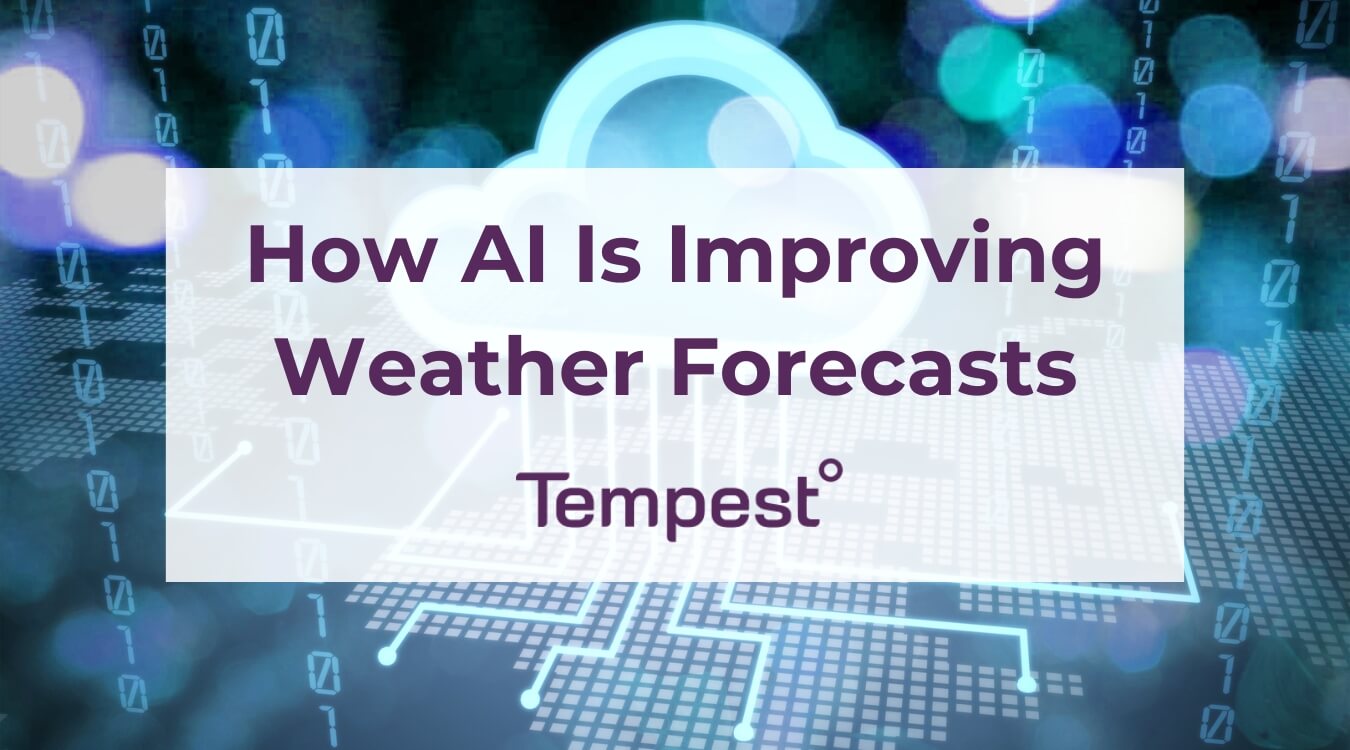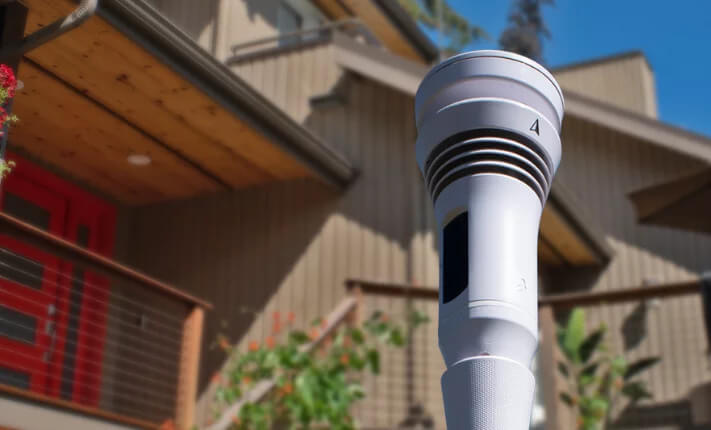From weekend plans to daily commutes, we all rely on weather forecasts. But they’re not always accurate, which is why AI in weather forecasts is quickly gaining attention as a smarter, more reliable solution.
Traditional forecasting methods have their limits, but AI is changing the game. By analyzing massive amounts of data in real time, AI is helping meteorologists make faster, more accurate predictions.
- AI In Weather Forecasting
- Why Artificial Intelligence Weather Prediction Is Important
- The Future Of Accurate Weather Forecasting
Ready to experience the future of forecasting? Discover how the Tempest Weather System uses AI to deliver pinpoint accuracy right from your own backyard.
AI In Weather Forecasting
AI has been increasingly popular, with people using it to do everything from writing more articulate emails to creating grocery lists and optimizing marketing efforts. However, one area where AI is improving everyone’s life is in artificial intelligence weather predictions.
AI weather predictions offer many benefits that traditional weather forecasting doesn’t, but it’s important to understand how traditional forecasting works before delving into the specifics of AI weather.
Traditional Vs. AI Weather Prediction
Traditional weather forecasting works by gathering data from various instruments, such as:
- Barometers
- Thermometers
- Anemometers
- Radars
- Weather vanes
- UV radiometers
- Disdrometers
- Satellites
Then, forecasters and meteorologists will take the data compiled from these instruments and feed it into a computer program to create the forecast. These programs require large amounts of numerical, statistical, and conceptual data, which makes the programming itself take immense amounts of energy in order to accurately give us forecasts every single day.
Beyond the influx of energy waste that comes from the traditional forecasting process, there is also an element of human error that comes into play. This usually results from inaccurate readings of the data itself or from biases that naturally occur in various programs.
AI And Weather Collection
Artificial intelligence is changing the game when it comes to the weather. There are several ways that AI differs from traditional forecasting, including:
- Data Collection: Not only can AI collect and analyze vast amounts of data in real time, but it can do this without relying on the supercomputers that other forecasting methods require.
- Modeling: Accurate and reliable weather models are difficult to come by, and they continuously need to be updated in order to give the best results. AI can circumvent this by utilizing predictive modeling for better results without the fear of human error.
- Pattern Recognition: Patterns take time for humans to learn, as they involve looking over vast amounts of data to get even semi-accurate results. AI can simplify this process and do it in mere minutes, much like our advanced forecast models for the Tempest Weather System.
AI quickly outpaces traditional models, ensuring that even the most avid at-home weather enthusiasts can get accurate predictions for their needs.
Why Artificial Intelligence Weather Prediction Is Important
While the fact that artificial intelligence weather prediction is quicker and more accurate than other methods should be reason enough to make the switch, there are even more important reasons why AI weather readings should be utilized.
Public Safety Improvements
We all know that certain weather conditions are dangerous for the public. Beyond the ease of having daily updates for small weather changes, such as a thunderstorm or snowfall predictions, there are many times where having emergency alerts can quickly ensure better public safety.
When there are ice storms, intense heat indexes, or natural disasters on the horizon, having fast and accurate weather readings are essential. AI weather forecasting improves these processes so people can stay ahead of the bad weather.
Agriculture Needs
Farmers need to have accurate readings in order to protect their crops, know how much to plant, and how weather trends might affect their growing season.
For example, one study discussed the impacts that long-range weather forecasts had on farmers who needed to know as much as possible about the upcoming monsoon season. Accurate readings, which AI weather systems can even further improve, allowed farmers to increase their crop output, which also increased their savings and allowed them to take better care of their families.
Transportation Considerations
Most people look at the weather before driving to work or on a long road trip, and having accurate readings can make all the difference in making sure everyone gets to their destination safely. This is especially true in regions that frequently have inclement weather, such as the Midwest during winter or the southern parts of the country during hurricane season.
Furthermore, AI weather predictions can even optimize routes for supply chain needs and increase revenue for businesses across America and beyond.
Learn how to predict the weather at home and in the wild when you don’t have access to locally accurate weather forecasts.
The Future Of Accurate Weather Forecasting
AI technology is constantly evolving, and this is true for the weather sector as well. There are multiple advancements scientists and engineers are working on to provide even better climate readings.
Hyper-Local Predictions
The weather can quickly change from one mile to the next, going from rainy to sunny in no time at all. Having hyper-local predictions for your exact location can help you even more easily plan your day and stay safe.
The Tempest Weather System is a personal weather station that sends accurate local weather insights directly to your phone and smart home, giving you forecasts that can help you plan.
Improved Disaster Preparedness
Scientists are constantly researching how to better prepare regions for potential disasters. From hurricanes to tornadoes to wildfires, having accurate readings as much in advance as possible can keep people safe and give them enough time to evacuate.
AI weather forecasting systems allow scientists to continually improve how to look for disasters before they even occur. Leveraging the latest technology can ensure that regions, homes, and families stay protected, no matter what may be on the horizon.
Disease and Pest Research
There are many diseases that occur due to pests and animals. For example, there are certain types of mosquitoes that spread dengue fever, which is a dangerous disease that is easily spread from mosquito to person. These mosquitoes thrive in wet areas that see a lot of rainfall, and being able to predict a particularly wet, hot season can help scientists warn people to take more precautions before further issues arise.
There are countless ways that the weather can affect disease and pests, which is why having AI advancements in weather forecasting is needed for continued safety and well-being.
The Tempest Weather System Creates Personalized Weather Forecasts With The Power Of AI
Our team at Tempest is passionate about providing the best in AI-powered weather forecasting services with our patented Nearcast™ Technology and proprietary observing data. No matter if you’re a weather enthusiast who wants to keep up to date with accurate local weather readings or a scientist looking to improve your weather data for research, we’re here to help.
Get in touch with us today to learn more about how our Tempest Weather System delivers hyper-local, real-time weather information straight to your smartphone or smart home devices.

